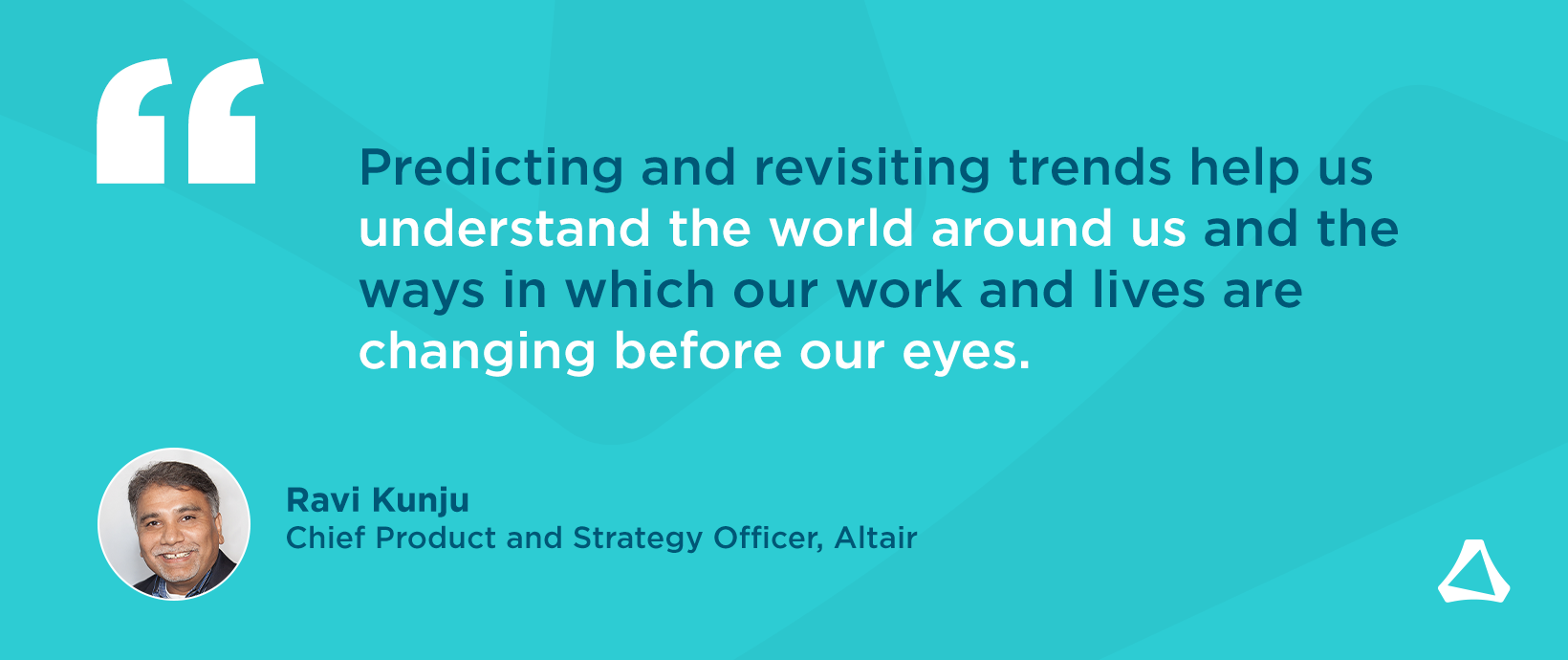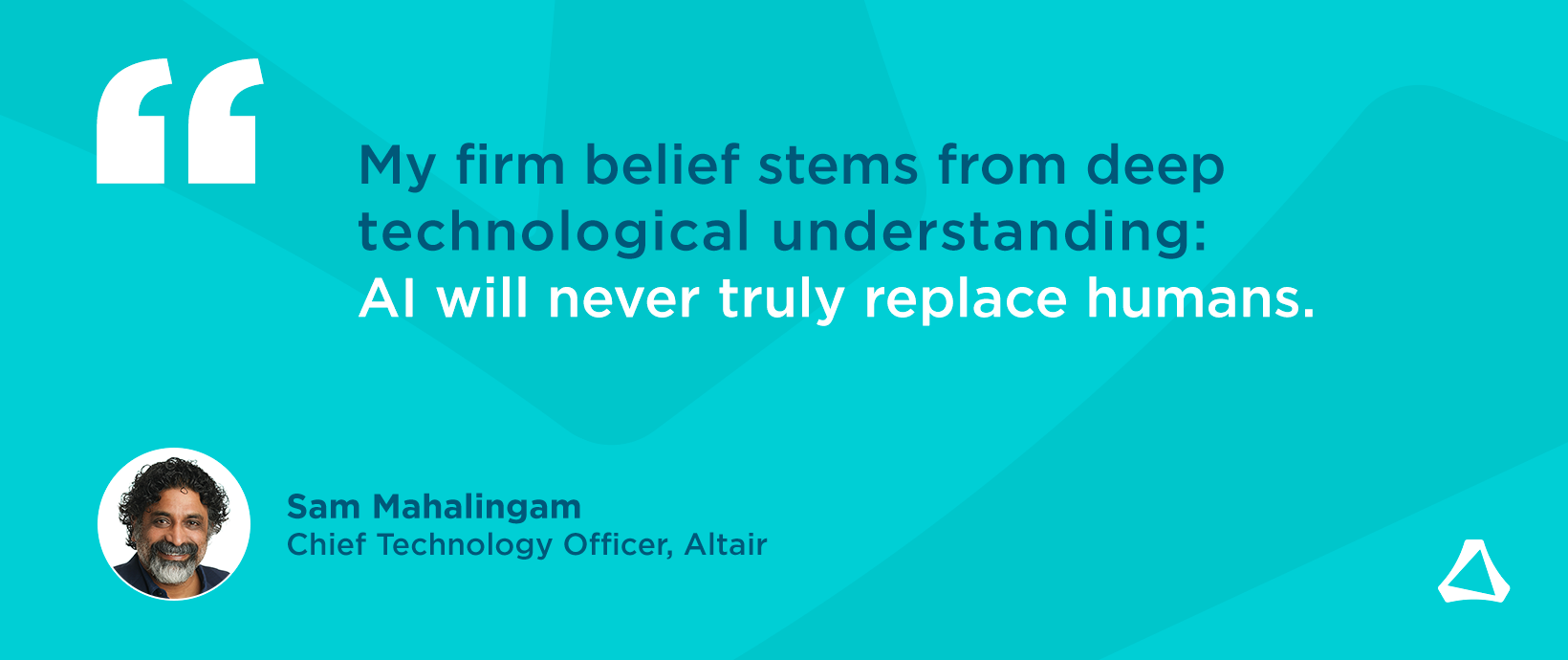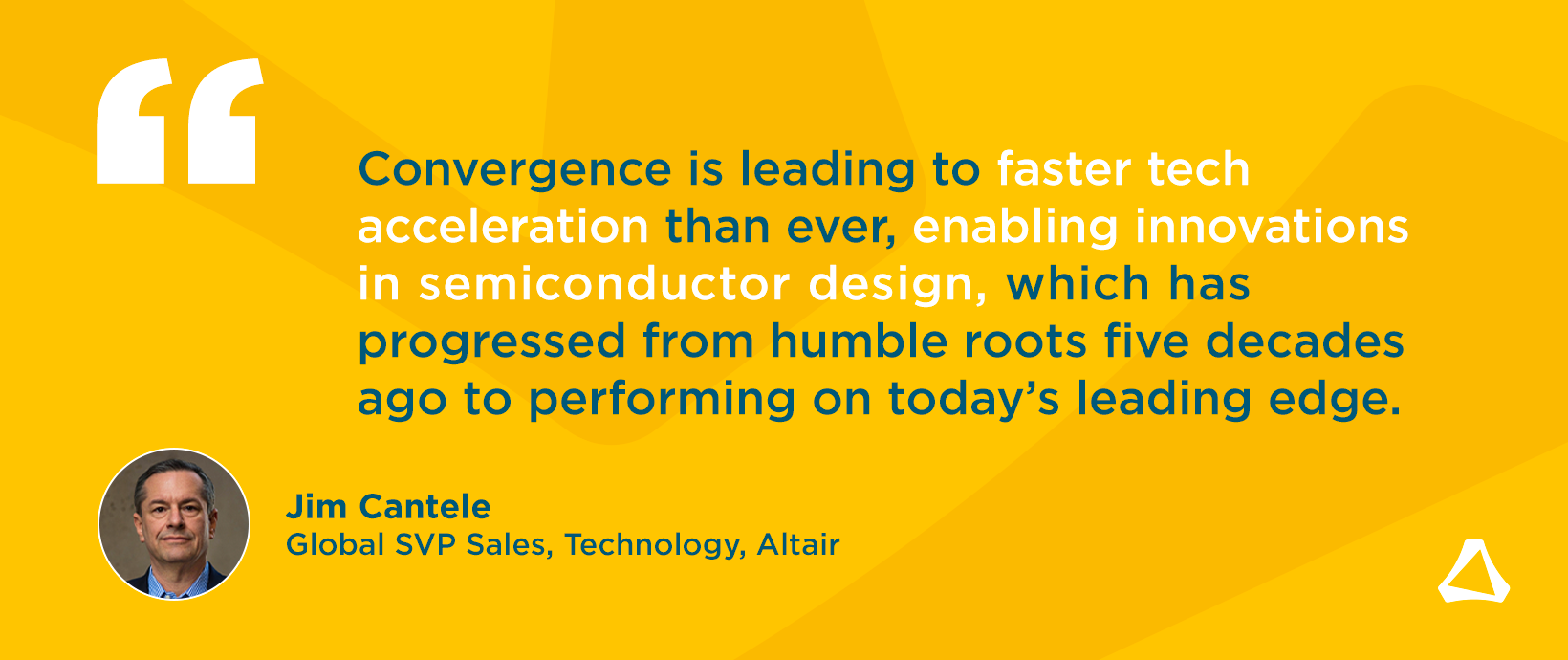The Top Three Computer Science Trends to Watch for 2023

2023 is upon us, which means it’s time for everyone to discuss what they predict will happen throughout the year. Predicting computer science trends and topics may be cliché – we're certainly guilty of making a few each year – but they do help us understand the world around us and the ways in which our work and lives are changing before our eyes. Predictions are also a natural impulse for many of us – with all the dizzying technological change occurring every day, how can we resist the urge to have the chance to say “I told you so” to our friends and colleagues?
Predicting the Top Three Computer Science Trends
So yes, I know that predicting trends can be a crapshoot and can lead to all sorts of ideas – the good, the bad, and the ugly – but I’d still like to add my voice to the chorus. Without further ado, here are the three main trends I see playing a massive role in computer science 2023.
Trend #1: Digital Twin Technology
It’s no secret that we at Altair are big on digital twin. Throughout the past year alone we’ve written articles, made infographics, conducted interviews, and presented entire segments of our flagship Future.Industry global event about digital twin and its component parts. I assure it’s not just for show. I believe digital twin technology will be a foundational part of our world moving forward – no matter where you’re at or what industry you work in. Already, organizations and industries across the globe are adopting digital twin to help them design better products, craft more efficient workflows, reduce waste and their carbon footprint, and create design loops that lead to better designs in less time. As our ability to create accessible, democratized data grows, this will only lead to more mature, more widespread digital twin use.
What’s driving this boom in digital twin use is both data and a better ability to create interconnected, electrified products and processes. As individuals, teams, departments, and organizations gain the ability to communicate more effectively, it allows people to create digital twin infrastructure that’s flexible, robust, and accessible. Altair has been especially careful in developing and cultivating technology that people can use how they want, where they want for this very reason. We’ve also made key strategic acquisitions that have bolstered our capabilities in unique ways, and believe that these moves – combined with our best-in-class Altair Units licensing model – offer customers a one-of-a-kind suite of digital twin tools and technologies.
Both inside Altair and beyond, I believe digital twin will play a key role in 2023 and beyond because it’s already impacting our world in the here and now. Look no further than this recent example of digital twin sustainability from the energy sector.
Trend #2: Localization
Unfortunately, we’re still seeing the effects of multiple major international business challenges, including war, the ongoing complications from COVID-19, supply chain issues, energy supply issues, inflation, rising unemployment, and more. All these factors, in their own way, encourage organizations around the world to bring operations close to home. This is especially true in two major areas – chip/semiconductor production, and manufacturing. In 2023, I believe we’ll see many organizations dedicate more resources to moving operations and production closer to their headquarters or home country.
Here in the U.S., we’ve already seen massive investments in new semiconductor production facilities, primarily the ones currently being built in Arizona to the tune of more than $40 billion. We’ve also seen a renewed interest in building automotive manufacturing plants domestically from U.S. automakers, spurred by the rapid growth of electric vehicles (EVs). I predict this trend will not be limited to the U.S., and will be replicated around the world, since localization can help organizations cut costs and streamline their operations amidst uncertain times. How this will affect global production, employment, and supply chains is yet to be determined, but we’ll soon find out.
Trend #3: Sustainability
The fight to mitigate climate change and its worst effects only grows more urgent. Around the world, I believe we must continue to find ways to drastically reduce – if not eliminate – carbon emissions, minimize waste and pollution, and develop products that are both built to last and designed to be recycled or refurbished at the end of their lifecycle. We must also find ways to innovate and develop smarter, more connected products while finding ways to extract vital raw materials such as lithium that aren’t deleterious to local and international ecosystems and water supplies. Above all, we must ensure that the wonderful innovations of the present don’t come at the expense of future generations and the planet they’ll inherit. I believe sustainability will be top of mind for many, many individuals and organizations in 2023.
More specifically, I think a crucial part of the sustainability puzzle will be a combination of both vehicle electrification and a greater emphasis on public transit and public transit-related infrastructure. It has been proven that public transit has many positive impacts on sustainability, such as improving air quality, conserving land, and reducing fossil fuel use. This is to say nothing of the next-generation electric public transit vehicles being developed and adopted, including electric and hydrogen-powered buses, and high-speed subways and rail lines. Altair has experience working with a myriad of manufacturers and organizations seeking to pioneer the next generation of e-mobility, and we’ve also worked to optimize other forms of sustainable transportation options, like bicycles.
Of course, sustainability is a massive, complex topic that will require continual focus and improvement. It’s also a topic that’s notorious for presenting as many questions as answers, even to those most dedicated to solving its thorniest challenges. But one thing is certain – the focus on sustainability is here to stay, and it’s permeating nearly every organization and industry around the world. And, naturally, digital twin technology is playing a vital role here, too.
Conclusion
Without a doubt, 2023 will find ways to surprise us. I believe these will be some of the major computer science trends affecting not just Altair, but the international computational science fields like artificial intelligence (AI), high-performance computing (HPC), data analytics, and machine learning as well. We will likely have to adapt to changing circumstances, new crises, and an ever-shifting technological landscape, but I have faith in people’s ability to meet needs and deliver things that make life better for all.
If you’re interested in reading about more 2023 computer science predictions, read this recent article in Digital News, where some of my colleagues and I provide our perspectives on more diverse, more specific trends than the ones I’ve outlined here.




